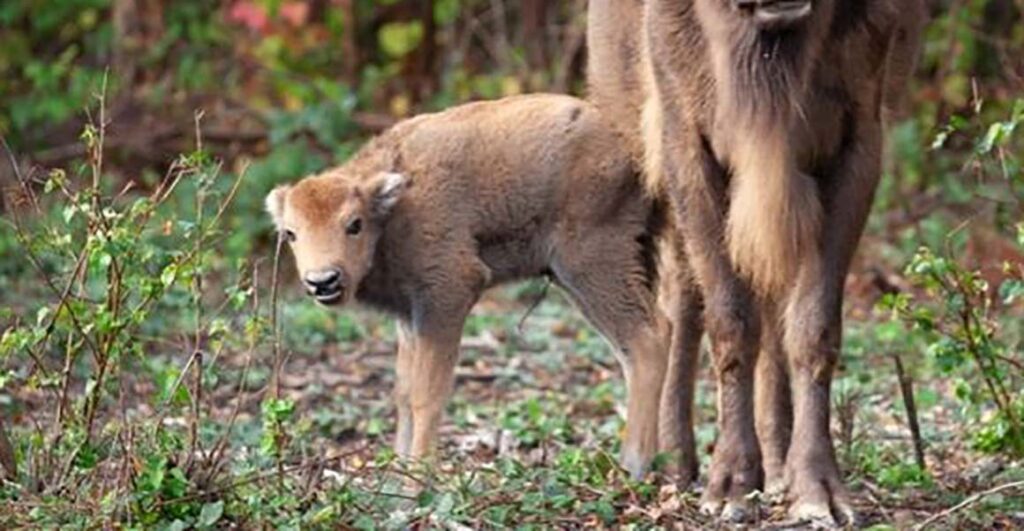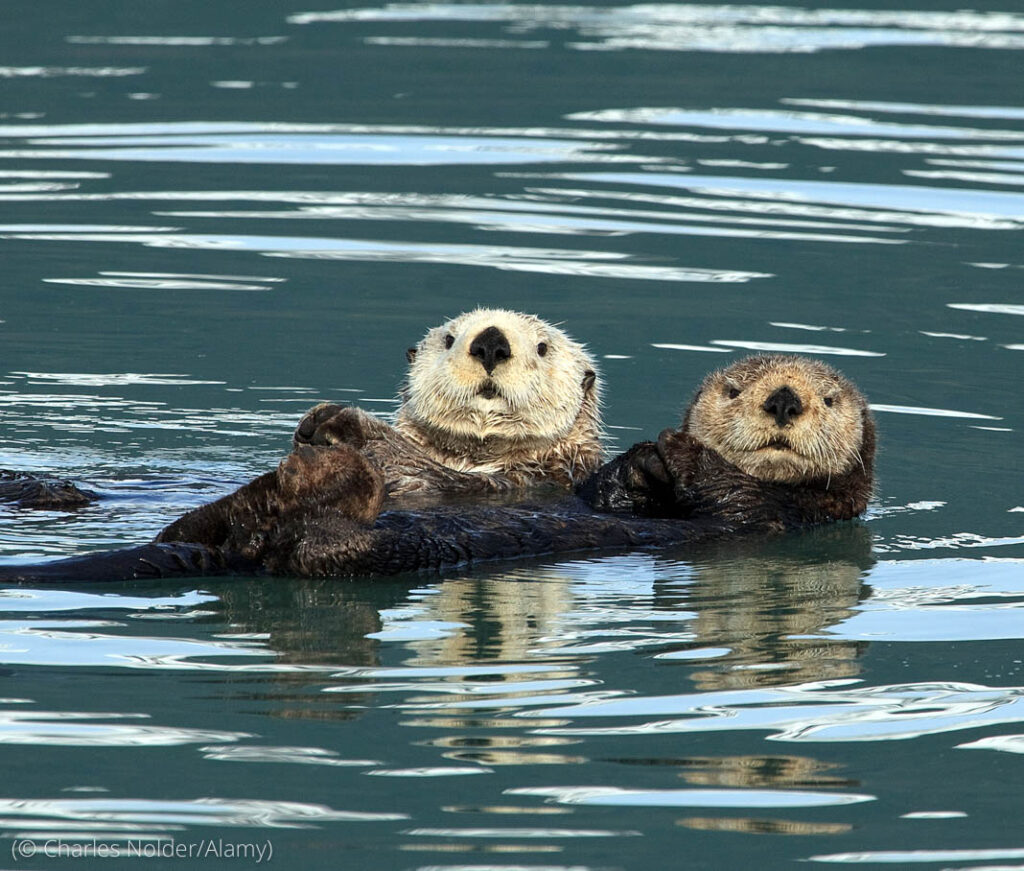I recently read about a bison being born in the “wild” in England. I put it in quotes, probably unfairly, thinking that England is pretty much tamed after all this time, with shrub-lined lanes, flower-dotted meadows, tidy fences, carefully pruned trees and well-behaved weeds. But reading the article I learned that indeed three wild bison were reintroduced last July in the Kent area and a young female delivered a surprise in October, the first bison born in the wild in England in 6,000 years. Pretty incredible to bring back a species after driving it to extinction. The English conservationist confessed that just about all large mammals had been extinguished in England, the result of centuries of hunting and taking over habitat. We humans don’t share particularly well when it comes to wildlife.
The same thing happened in North America once the colonists arrived. Some took what they needed of the richness that lay before them, cultivating, harvesting, hunting to support themselves. Others, a significant number, saw a huge expanse of land and resources, including wildlife, just waiting to be exploited. Some believed it was a God-given right and duty, even, to help themselves; others had commercial motives; and others simply indulged in recreational killing for the joy of it. All this is spun out in a powerful new book by my friend Dan Flores, “Wild New World.” It is a great read for all kinds of reasons. And yes, there are painful parts where you will shake your head in disbelief that mankind could be so wantonly destructive of animal life. “This is not going to be a happy ending,” you think to yourself, and then, Dan, a self-described optimist, pulls it out and ends with hope.
In the early 1900s the reality of what had happened, the loss of hundreds of species in a short couple of hundred years, seemed to sink in to enough of the American psyche to cause a shift. Authors, scholars, scientists and political leaders began to turn conservationist, and a segment of public opinion followed suit. Ironically, it was the hunters who first noticed that they had shot themselves in the foot, so to speak, by the destruction of habitat and reckless killing of the very animals that they treasured as trophies – elk, moose, bears, etc. Their hunting clubs were instrumental in changing land use laws and policies to limit the taking of certain large mammals. Wildlife refuges and hunting seasons were established. With the attention focused on lost species and a dawning of guilt over the 200-year killing spree, public sympathy grew for the plight of wildlife now fighting for existence.
The big moment that gives Dan reason for hope was the passage of the Endangered Species Act (ESA) in 1973. Remarkably Congress passed the Act by a 355 to 4 vote, committing to the conservation and protection of endangered and threatened species and their habitat. The first on the list was the American Bald Eagle which had been hunted almost to extinction. Since then many species have recovered and left the list and in spite of ups and downs both in congressional support for the ESA and public interest, it remains a powerful tool in the protection of wild America.
In the 1990s the US Fish and Wildlife Service, responsible for endangered species, was struggling with a reduced budget and a skyrocketing number of species waiting to be listed as “threatened,” or perhaps to be moved straight to the most critical list, “endangered.” As we all do with a shrinking budget, they had to cut corners, something had to give. The agency wanted to know what a cross-section of Americans who used private and public lands thought, how they would recommend balancing the budget. I was hired to facilitate meetings in Oregon, Montana, Arizona and Colorado that included the full range of those with an interest. I remember outspoken ranchers concerned about wolves killing cattle, farmers prevented from using pesticides because of an endangered bird in the area, conservationists fighting for the return of land to the wild, birdwatchers, developers, hunters, all with an opinion. One of the dilemmas I posed to them was this: Which is a better policy given the limited budget to protect species: to focus on those species that are the most endangered, those with the fewest numbers, poorest habitat, those likely to die out in the next few years without help; OR to focus on those species that are closer to recovery, that with some help may be able to move off the threatened or endangered list in a few years, thus sacrificing those in the worst shape?
Another question was whether the agency should focus on the “charismatic” species, the ones that arouse public sympathy and open pocket books, in short the ones that are cute or exciting –otters, of course, bunnies and bear cubs, yes, big exotic cats, for sure. These candidates may or may not be high on the vulnerable list, but their ability to raise large amounts of money and pull at heart strings makes them valuable public relations tools for the ESA program. Maybe the wisest move was to use a chunk of the budget to raise more funds… on the backs of the otters and bear cubs.
The agency – and I – had hoped for definitive answers and clear directions from those attending the meetings, but in the end it was Fish and Wildlife staff who had to make the calls. I’m sure they struggled to do the right thing, knowing that inevitably there would be winners and losers. But to take on a bit of Dan Flores’ optimism, at least there were winners. Americans came to their senses in the middle of the last century, realized they were on the brink of losing a significant part of the American landscape, and pushed through the Endangered Species Act. And through the stresses of political strife, climate change, natural and man-made disasters, and economic uncertainty, we continue to maintain that list and do our best to protect and resuscitate at least some of our endangered wildlife.
May 2023 be a good year for all living things, and may we continue to right the wrongs we have visited on the planet and each other.








Thank you for this bit of perspective and optimism at the beginning of the new year, Lucy!
Good to hear from you, Jake, and thanks for all your good work at EPA. Hope it’s a good year for both you and the agency.
A great read! So much to reflect upon over the last 50 years, not to mention what happened before 1973.
Thank you for sharing. A lot transpired in the 50 years since there was near unanimous agreement on a change of direction.
Thanks, Rhea. 50 years, yipes.